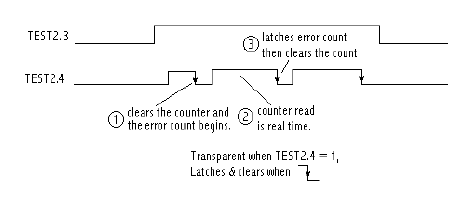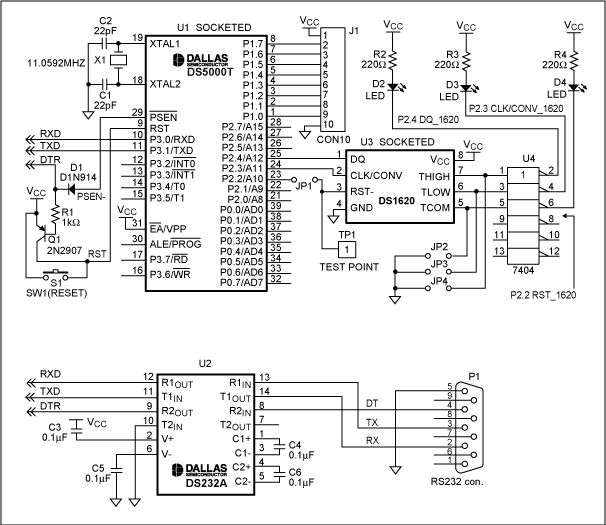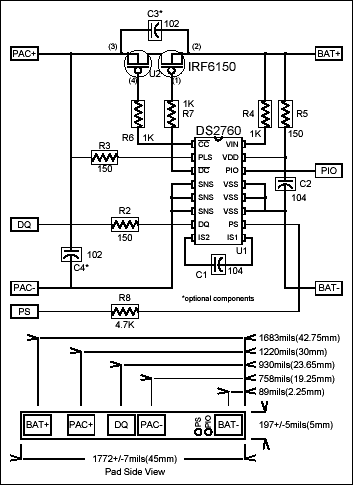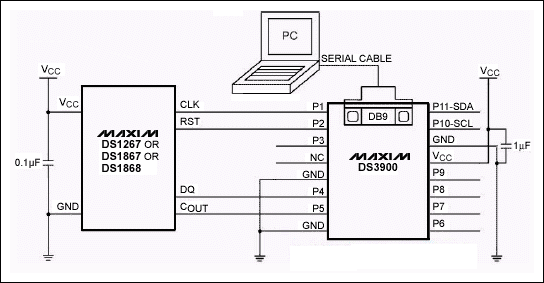DS1620家用電扇控制電路圖
2009-06-08 09:13:27 2666
2666 
01620-90903 (May 1973) The 1620A Pattern Analyzer is a discontinued product. This manual is provided for information only.
2018-11-09 16:32:42
SENSOR TEMPERATURE 3-WIRE 8DIP
2023-03-22 02:46:28
DS1620 - Power Management, Thermal Management Evaluation Board
2023-03-22 19:54:49
SH79F1620是一種高速高效率8051可兼容單片機。在同樣振蕩頻率下,較之傳統(tǒng)的8051芯片它有著運行更快速的優(yōu)越特性。 SH79F1620保留了標準8051芯片的大部分特性�����。這些特性包括內置
2022-10-20 06:27:34
測量通道的標定麻煩�,溫度測量的準確度也相對較低����。所以���,本設計采用Dallas公司生產的數(shù)字溫度傳感器DS1620�。 (1)DS1620的特點�。數(shù)字溫度傳感器DS1620是Dallas公司推出的新型
2009-08-21 15:07:07
請問一下DS1620這個溫度傳感器芯片帶不帶程序����?
2023-05-17 11:00:20
The HT1620 is a 128 pattern (32�4), memory mapping,and multi-function LCD driver.
2008-11-11 09:49:40 30
30 INTRODUCTIONThe DS1631 was designed to be software compatible with the DS1621 in most applications
2009-04-17 12:08:13 20
20 INTRODUCTIONThe DS1631 was designed to be software compatible with the DS1621 in most applications
2009-04-18 10:11:41 22
22 a built-in LCD and RS-485 communicat ion por t . I t is designed around Atmel’s AT89C2051 processor, a DS1620 digital thermometer/ the
2009-06-27 11:34:06 75
75 摘要:本文介紹DALLAS公司產品DS1620芯片技術指標及性能,可以方便地與單片機組成測溫、控溫儀器儀表�����。關鍵詞:溫度傳感及控制器���;單片機��;便攜測控溫儀
2010-05-13 09:22:11 29
29 ADC12D1620CCMPRTI ADC12D1620CCMPR:高性能���、多通道同步采樣的12位ADC在當今這個快速發(fā)展的電子時代,高精度、多通道的模數(shù)轉換器(ADC)成為了眾多領域的核心需求
2024-02-16 16:00:44
!安立MD1620C頻譜分析儀MD1620C!<優(yōu)價>小兵/李S
東莞市銀通電子儀器有限公司聯(lián)系人:歐陽小兵/李小姐手機:13332662998/13790420385電話:0769-87912629傳真:0769-87912842
2008-11-28 15:25:07 1416
1416 Using the
2009-01-06 13:45:20 775
775 
Using the DS32kHz with Dallas Real-Time Clocks
Abstract: This application note describes how
2009-03-31 22:27:51 678
678 is a completely open source, portable C library to create a 1-Wire master using the DS2480B serial
2009-04-17 09:37:10 1021
1021 
Abstract: This application note describes how to reduce current consumption when using the DS
2009-04-17 10:17:42 806
806 Abstract: Communication with the DS1620 digital temperature sensor IC is achieved via a simple
2009-04-18 10:46:14 751
751 
) is ideal for applications such as data logging. This application note examines temperature-measuring techniques interfacing to the DS1620 dig
2009-04-18 10:48:58 562
562 
Abstract: This application note will help with the migration from a current design using the DS
2009-04-20 10:13:54 653
653 Abstract: Application Note 338 provides the criteria used to set and clear alarms using the Dallas
2009-04-20 10:14:45 589
589 loopback application using the Dallas Semiconductor/Maxim DS2141A, DS2142, DS2151, or DS2153. With Elastic Store Disabled DS21
2009-04-20 10:39:41 882
882 
drop and insert application using the Dallas Semiconductor/Maxim DS2141A T1 framer or DS2143 E1 framer.
2009-04-20 10:40:36 701
701 
system backplane using the Dallas Semiconductor/Maxim DS2152 and DS2154 T1/E1 single chip tranceivers (SCTs). The DS2155, DS26528, DS26524, DS
2009-04-20 10:46:00 1036
1036 
Abstract: Some special functions are not derivable by using the normal transmit and receive side
2009-04-20 10:48:32 851
851 
software download become unusable for any reason. This application note describes how the DS4510, DS4520, and DS4550 non-volatile I/O expande
2009-04-20 11:08:51 995
995 
Abstract: This application note is intended to demonstrate an application using the DS
2009-04-21 09:50:44 1359
1359 
Abstract: This application note describes how to reduce current consumption when using the DS
2009-04-21 10:49:55 1099
1099 Using the
2009-04-23 08:42:35 898
898 
) is ideal for applications such as data logging. This application note examines temperature-measuring techniques interfacing to the DS1620 dig
2009-04-23 10:28:46 1120
1120 
compatible) microcontroller to the DS1620 digital temperature sensor. The DS1620 communicates via a 3-wire serial digital interface. Software co
2009-04-23 14:40:07 1737
1737 
Abstract: This application note describes how to use the DS3900 PC serial port to 3-wire interface
2009-04-28 11:50:56 812
812 
Abstract: This application note will help with the migration from a current design using the DS
2009-04-29 10:03:34 568
568 Abstract: Application Note 338 provides the criteria used to set and clear alarms using the Dallas
2009-04-29 10:07:14 803
803 drop and insert application using the Dallas Semiconductor/Maxim DS2141A T1 framer or DS2143 E1 framer.
2009-04-29 10:21:02 1323
1323 
system backplane using the Dallas Semiconductor/Maxim DS2152 and DS2154 T1/E1 single chip tranceivers (SCTs). The DS2155, DS26528, DS26524, DS
2009-04-29 10:24:57 1000
1000 
that supports monitoring and control of power delivery to a multiple battery system using the Dallas Semiconductor DS2760 or DS2761 battery monit
2009-04-30 11:35:04 1409
1409 
Abstract: The DS1802 audio potentiometer contains two digitally controlled potentiometers
2009-05-05 11:14:56 2531
2531 
介紹了數(shù)字式溫度測控芯片在數(shù)字放射系統(tǒng)中X射線采集板溫度自動控制中的應用��。采用PC和單獨控制雙模塊分別控制溫度��,利用半導體傳感器DS1620進行四路溫度采集����,通過單片機和PC
2009-05-05 20:43:22 1048
1048 
Abstract: This application note describes how to use the DS3900 PC serial port to 3-wire interface
2009-05-08 09:09:22 696
696 
DS1620恒溫電路圖
2009-06-03 15:28:51 806
806 
DS1620家用電扇控制電路圖
2009-06-03 15:29:30 659
659 
DS1620溫度傳感器-控制器及風扇自控電路圖
2009-06-03 15:30:18 1097
1097 
如何制作數(shù)字溫度計
現(xiàn)在您對Stamp和液晶顯示屏有了初步的了解�,我們再加一個元件就可以制作一支數(shù)字溫度計。 制作數(shù)字溫度計需要用到芯片DS1620�。 該芯片包含:
2009-08-21 16:10:46 6914
6914 DS1620是DALLAS半導體公司的溫度傳感器家庭成員之一,是新型數(shù)字式溫度傳感器。
2011-05-05 18:18:08 4682
4682 
DS1620 是DALLAS 半導體公司的 溫度傳感器 家庭成員之一���,是新型數(shù)字式溫度傳感器���。其測溫范圍寬(-55℃~+125℃),感應能力精確,不需A/D 轉換電路�,直接將溫度值轉換成數(shù)字量���。其外
2011-07-18 16:48:43 28
28 tm1620 data sheet
2017-03-20 11:01:27 71
71 Frequent Faux Pas in Applying Wideband Current Feedback Amplifiers
2017-03-24 15:50:13 0
0 沿后跟上升沿的序列�。對于數(shù)據(jù)輸入,數(shù)據(jù)必須是有效的時鐘周期的上升沿期間�。數(shù)據(jù)位輸出時鐘的下降沿,并保持有效通過上升沿�。閱讀從DS1620數(shù)據(jù)時�����,DQ引腳變?yōu)楦咦杩範顟B(tài)���,時鐘高���。采取積極低RST低在通信周期將導致DQ到一個高阻抗狀態(tài),從而結束
2017-04-07 15:36:51 11
11 電子發(fā)燒友網為你提供TI(ti)INA1620相關產品參數(shù)�����、數(shù)據(jù)手冊,更有INA1620的引腳圖�、接線圖��、封裝手冊��、中文資料��、英文資料,INA1620真值表���,INA1620管腳等資料��,希望可以幫助到廣大的電子工程師們。
2018-11-02 18:06:06

電子發(fā)燒友網為你提供Broadcom(ti)HLMP-1620相關產品參數(shù)�����、數(shù)據(jù)手冊,更有HLMP-1620的引腳圖����、接線圖����、封裝手冊��、中文資料����、英文資料�����,HLMP-1620真值表����,HLMP-1620管腳等資料�����,希望可以幫助到廣大的電子工程師們。
2019-07-04 11:55:01

電子發(fā)燒友網為你提供Broadcom(ti)HLMP-1620-C00A2相關產品參數(shù)�����、數(shù)據(jù)手冊�����,更有HLMP-1620-C00A2的引腳圖���、接線圖�、封裝手冊、中文資料��、英文資料���,HLMP-1620-C00A2真值表,HLMP-1620-C00A2管腳等資料,希望可以幫助到廣大的電子工程師們��。
2019-07-04 11:55:01

電子發(fā)燒友網為你提供Broadcom(ti)HLMP-1620-C00A1相關產品參數(shù)�、數(shù)據(jù)手冊,更有HLMP-1620-C00A1的引腳圖、接線圖、封裝手冊�����、中文資料�����、英文資料�����,HLMP-1620-C00A1真值表,HLMP-1620-C00A1管腳等資料���,希望可以幫助到廣大的電子工程師們�。
2019-07-04 11:55:01

DS1620是Dallas公司推出的數(shù)字溫度測控器件。 2.7~ 5.0V供電電壓,測量溫度范圍為-55~+125℃�,9位數(shù)字量表示溫度值,分辨率為0.5℃���。在0~+70℃精確度為0.5℃����, -40
2020-07-20 14:41:41 1489
1489 
DS1620是一片8引腳的片內建有溫度測量并轉換為數(shù)字值的集成電路�����,他集溫度傳感、溫度數(shù)據(jù)轉換與傳輸����、溫度控制等功能于一體。測溫范圍:-55~+125℃��,精度為0.5℃���。該芯片非常容易與單片機連接�����,實現(xiàn)溫度的測控應用���,單獨做溫度控制器使用時,可不用外加其他輔助元件��。
2021-03-24 10:46:30 1867
1867 
DC1620A-設計文件
2021-04-09 20:46:50 0
0 LT1620/LT1621-規(guī)格說明
2021-04-29 21:20:16 1
1 ADIS1620x/PCB評估板
2021-05-20 20:29:17 7
7 ADIS1620x/PCB評估板
2021-05-20 21:10:33 8
8 ADIS1620xPCB評估板
2021-05-31 13:39:10 1
1 DC1620A-設計文件
2021-06-08 11:02:31 2
2 電子發(fā)燒友網為你提供ADI(ti)DC1620A-A相關產品參數(shù)�����、數(shù)據(jù)手冊,更有DC1620A-A的引腳圖���、接線圖�����、封裝手冊��、中文資料�����、英文資料���,DC1620A-A真值表,DC1620A-A管腳等資料����,希望可以幫助到廣大的電子工程師們。
2021-08-07 01:00:01
電子發(fā)燒友網為你提供ADI(ti)DC1620A-T相關產品參數(shù)��、數(shù)據(jù)手冊�,更有DC1620A-T的引腳圖�����、接線圖、封裝手冊�、中文資料、英文資料�,DC1620A-T真值表,DC1620A-T管腳等資料���,希望可以幫助到廣大的電子工程師們�。
2021-09-02 19:00:04
電子發(fā)燒友網為你提供ADI(ti)DC1620A-S相關產品參數(shù)��、數(shù)據(jù)手冊��,更有DC1620A-S的引腳圖��、接線圖�、封裝手冊、中文資料�、英文資料,DC1620A-S真值表����,DC1620A-S管腳等資料,希望可以幫助到廣大的電子工程師們�。
2021-09-02 17:00:04
電子發(fā)燒友網為你提供ADI(ti)DC1620A-R相關產品參數(shù)�����、數(shù)據(jù)手冊�,更有DC1620A-R的引腳圖�、接線圖、封裝手冊�、中文資料、英文資料��,DC1620A-R真值表����,DC1620A-R管腳等資料,希望可以幫助到廣大的電子工程師們���。
2021-09-02 18:00:04
電子發(fā)燒友網為你提供ADI(ti)DC1620A-Q相關產品參數(shù)�����、數(shù)據(jù)手冊����,更有DC1620A-Q的引腳圖��、接線圖���、封裝手冊��、中文資料�����、英文資料���,DC1620A-Q真值表,DC1620A-Q管腳等資料���,希望可以幫助到廣大的電子工程師們��。
2021-09-02 18:00:04
電子發(fā)燒友網為你提供ADI(ti)DC1620A-P相關產品參數(shù)���、數(shù)據(jù)手冊,更有DC1620A-P的引腳圖���、接線圖��、封裝手冊���、中文資料��、英文資料�����,DC1620A-P真值表��,DC1620A-P管腳等資料�����,希望可以幫助到廣大的電子工程師們�����。
2021-09-02 18:00:04
電子發(fā)燒友網為你提供ADI(ti)DC1620A-O相關產品參數(shù)���、數(shù)據(jù)手冊,更有DC1620A-O的引腳圖�����、接線圖���、封裝手冊���、中文資料、英文資料���,DC1620A-O真值表����,DC1620A-O管腳等資料��,希望可以幫助到廣大的電子工程師們�。
2021-09-02 18:00:04
電子發(fā)燒友網為你提供ADI(ti)DC1620A-N相關產品參數(shù)、數(shù)據(jù)手冊���,更有DC1620A-N的引腳圖�����、接線圖�、封裝手冊����、中文資料�����、英文資料����,DC1620A-N真值表����,DC1620A-N管腳等資料,希望可以幫助到廣大的電子工程師們��。
2021-09-02 18:00:04
電子發(fā)燒友網為你提供ADI(ti)DC1620A-M相關產品參數(shù)��、數(shù)據(jù)手冊�����,更有DC1620A-M的引腳圖�、接線圖、封裝手冊�����、中文資料、英文資料����,DC1620A-M真值表,DC1620A-M管腳等資料�����,希望可以幫助到廣大的電子工程師們���。
2021-09-02 18:00:04
電子發(fā)燒友網為你提供ADI(ti)DC1620A-K相關產品參數(shù)、數(shù)據(jù)手冊���,更有DC1620A-K的引腳圖��、接線圖���、封裝手冊、中文資料����、英文資料,DC1620A-K真值表�����,DC1620A-K管腳等資料,希望可以幫助到廣大的電子工程師們����。
2021-09-03 11:00:03
電子發(fā)燒友網為你提供ADI(ti)DC1620A-J相關產品參數(shù)、數(shù)據(jù)手冊��,更有DC1620A-J的引腳圖�、接線圖、封裝手冊���、中文資料��、英文資料�,DC1620A-J真值表���,DC1620A-J管腳等資料�����,希望可以幫助到廣大的電子工程師們���。
2021-09-03 11:00:03
電子發(fā)燒友網為你提供ADI(ti)DC1620A-H相關產品參數(shù)、數(shù)據(jù)手冊,更有DC1620A-H的引腳圖��、接線圖����、封裝手冊、中文資料�����、英文資料���,DC1620A-H真值表����,DC1620A-H管腳等資料���,希望可以幫助到廣大的電子工程師們。
2021-09-03 11:00:03
電子發(fā)燒友網為你提供ADI(ti)DC1620A-I相關產品參數(shù)�����、數(shù)據(jù)手冊�����,更有DC1620A-I的引腳圖、接線圖��、封裝手冊����、中文資料、英文資料��,DC1620A-I真值表��,DC1620A-I管腳等資料��,希望可以幫助到廣大的電子工程師們��。
2021-09-03 11:00:03
電子發(fā)燒友網為你提供ADI(ti)DC1620A-L相關產品參數(shù)�����、數(shù)據(jù)手冊����,更有DC1620A-L的引腳圖、接線圖���、封裝手冊����、中文資料、英文資料����,DC1620A-L真值表,DC1620A-L管腳等資料�,希望可以幫助到廣大的電子工程師們�����。
2021-09-03 11:00:03
電子發(fā)燒友網為你提供ADI(ti)DC1620A-G相關產品參數(shù)�����、數(shù)據(jù)手冊����,更有DC1620A-G的引腳圖�����、接線圖�、封裝手冊��、中文資料�、英文資料����,DC1620A-G真值表,DC1620A-G管腳等資料�,希望可以幫助到廣大的電子工程師們。
2021-09-03 12:00:03
電子發(fā)燒友網為你提供ADI(ti)DC1620A-F相關產品參數(shù)�����、數(shù)據(jù)手冊���,更有DC1620A-F的引腳圖���、接線圖、封裝手冊�、中文資料����、英文資料�����,DC1620A-F真值表���,DC1620A-F管腳等資料���,希望可以幫助到廣大的電子工程師們。
2021-09-03 12:00:03
電子發(fā)燒友網為你提供ADI(ti)DC1620A-E相關產品參數(shù)��、數(shù)據(jù)手冊����,更有DC1620A-E的引腳圖、接線圖�、封裝手冊、中文資料���、英文資料,DC1620A-E真值表���,DC1620A-E管腳等資料����,希望可以幫助到廣大的電子工程師們。
2021-09-03 12:00:03
電子發(fā)燒友網為你提供ADI(ti)DC1620A-D相關產品參數(shù)�、數(shù)據(jù)手冊,更有DC1620A-D的引腳圖���、接線圖��、封裝手冊���、中文資料、英文資料�,DC1620A-D真值表,DC1620A-D管腳等資料���,希望可以幫助到廣大的電子工程師們����。
2021-09-03 12:00:03
電子發(fā)燒友網為你提供ADI(ti)DC1620A-C相關產品參數(shù)���、數(shù)據(jù)手冊�����,更有DC1620A-C的引腳圖����、接線圖、封裝手冊���、中文資料�����、英文資料���,DC1620A-C真值表,DC1620A-C管腳等資料��,希望可以幫助到廣大的電子工程師們�。
2021-09-03 12:00:03
電子發(fā)燒友網為你提供ADI(ti)DC1620A-B相關產品參數(shù)、數(shù)據(jù)手冊��,更有DC1620A-B的引腳圖����、接線圖��、封裝手冊、中文資料�、英文資料,DC1620A-B真值表����,DC1620A-B管腳等資料,希望可以幫助到廣大的電子工程師們��。
2021-09-03 12:00:03
電子發(fā)燒友網為你提供()DS1620S+T&R相關產品參數(shù)����、數(shù)據(jù)手冊,更有DS1620S+T&R的引腳圖����、接線圖、封裝手冊����、中文資料、英文資料�,DS1620S+T&R真值表,DS1620S+T&R管腳等資料,希望可以幫助到廣大的電子工程師們���。
2022-10-28 10:11:33

電子發(fā)燒友網為你提供()DS1620S+相關產品參數(shù)�����、數(shù)據(jù)手冊��,更有DS1620S+的引腳圖�、接線圖���、封裝手冊�����、中文資料��、英文資料���,DS1620S+真值表,DS1620S+管腳等資料��,希望可以幫助到廣大的電子工程師們�。
2022-10-28 10:10:48

電子發(fā)燒友網為你提供()DS1620相關產品參數(shù)、數(shù)據(jù)手冊,更有DS1620的引腳圖�、接線圖、封裝手冊��、中文資料����、英文資料����,DS1620真值表,DS1620管腳等資料���,希望可以幫助到廣大的電子工程師們����。
2022-10-28 10:09:05

電子發(fā)燒友網為你提供()DS1620S相關產品參數(shù)����、數(shù)據(jù)手冊,更有DS1620S的引腳圖�����、接線圖、封裝手冊��、中文資料�、英文資料,DS1620S真值表��,DS1620S管腳等資料��,希望可以幫助到廣大的電子工程師們����。
2022-10-28 10:09:05

電子發(fā)燒友網為你提供()DS1620S-D1相關產品參數(shù)、數(shù)據(jù)手冊�����,更有DS1620S-D1的引腳圖��、接線圖�、封裝手冊、中文資料����、英文資料,DS1620S-D1真值表���,DS1620S-D1管腳等資料����,希望可以幫助到廣大的電子工程師們。
2022-11-02 08:23:07

電子發(fā)燒友網為你提供()DS1620S-D1/T&R相關產品參數(shù)���、數(shù)據(jù)手冊��,更有DS1620S-D1/T&R的引腳圖�、接線圖����、封裝手冊�����、中文資料�、英文資料,DS1620S-D1/T&R真值表�,DS1620S-D1/T&R管腳等資料,希望可以幫助到廣大的電子工程師們�����。
2022-11-02 08:23:12

電子發(fā)燒友網為你提供()DS1620S/T&R相關產品參數(shù)、數(shù)據(jù)手冊�,更有DS1620S/T&R的引腳圖、接線圖����、封裝手冊、中文資料�����、英文資料�����,DS1620S/T&R真值表��,DS1620S/T&R管腳等資料�����,希望可以幫助到廣大的電子工程師們����。
2022-11-02 08:23:13

DS1620通過計算低溫度系數(shù)振蕩器在由高溫度系數(shù)振蕩器確定的柵極周期內經過的時鐘周期數(shù)來測量溫度。計數(shù)器預設了對應于-55°C的基數(shù)�。 如果計數(shù)器在柵極周期結束前達到零����,則溫度寄存器(也預設為-55°C值)將遞增����,表示溫度高于-55°C。
2023-01-10 10:52:27 732
732 
DS1620數(shù)字溫度計和恒溫器提供3路溫控器輸出(THIGH, TLOW和TCOM)����,可用于控制風扇或加熱器。有兩個用戶可編程閾值(TH和 TL) 控制三個輸出����。當測得的溫度超過TH/ 7高被驅動得很高。當測得的溫度低于T時L/ 7低被驅動得很高��。
2023-01-16 10:27:12 677
677 
本應用筆記向用戶介紹DS5000(兼容8051)微控制器與DS1620數(shù)字溫度傳感器的接口軟件����。DS1620通過3線串行數(shù)字接口進行通信����。提供的軟件代碼用于讀取DS1620溫度寄存器,并根據(jù)計數(shù)器和斜率累加器寄存器的數(shù)據(jù)計算高分辨率結果�����。
2023-03-01 15:29:44 387
387 
2SK1620(L)�、2SK1620(S)數(shù)據(jù)表
2023-05-08 20:16:36 0
0 2SK1620(L) 2SK1620(S) 數(shù)據(jù)表
2023-05-11 20:11:51 0
0 與DS1620數(shù)字溫度傳感器IC的通信通過簡單的3線接口實現(xiàn)。此接口與摩托羅拉 SPI 之間存在許多差異?接口�。然而,只需對DS1620進行一些小的硬件和軟件修改�,就可以有效地集成到基于SPI的系統(tǒng)中。
2023-05-16 11:28:10 562
562 
2SK1620(L)���、2SK1620(S)數(shù)據(jù)表
2023-06-27 19:56:47 0
0 2SK1620(L) 2SK1620(S) 數(shù)據(jù)表
2023-06-28 20:36:27 0
0 電子發(fā)燒友網為你提供Maxim(Maxim)MAX1620EEE+相關產品參數(shù)�����、數(shù)據(jù)手冊����,更有MAX1620EEE+的引腳圖����、接線圖����、封裝手冊�����、中文資料��、英文資料���,MAX1620EEE+真值表����,MAX1620EEE+管腳等資料��,希望可以幫助到廣大的電子工程師們����。
2023-08-23 18:48:23

電子發(fā)燒友網為你提供Maxim(Maxim)MAX1620EEE+T相關產品參數(shù)����、數(shù)據(jù)手冊,更有MAX1620EEE+T的引腳圖����、接線圖���、封裝手冊、中文資料����、英文資料,MAX1620EEE+T真值表���,MAX1620EEE+T管腳等資料����,希望可以幫助到廣大的電子工程師們�����。
2023-09-01 18:46:32











 電子發(fā)燒友App
電子發(fā)燒友App
























































評論